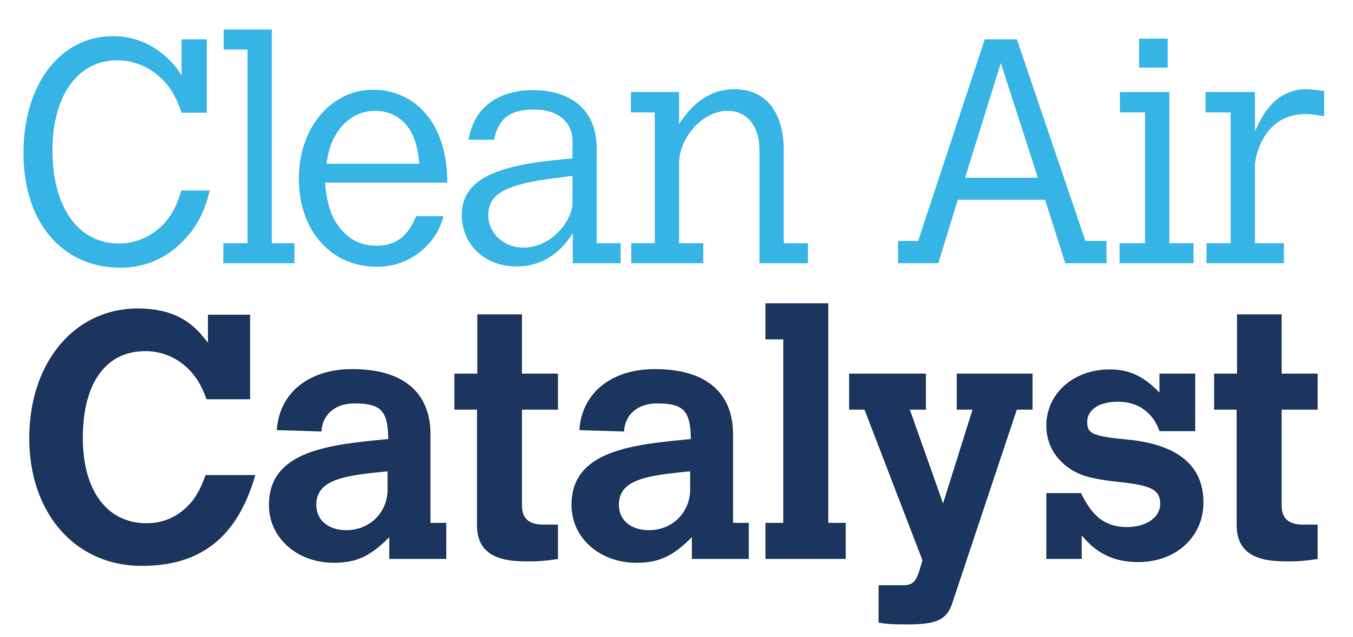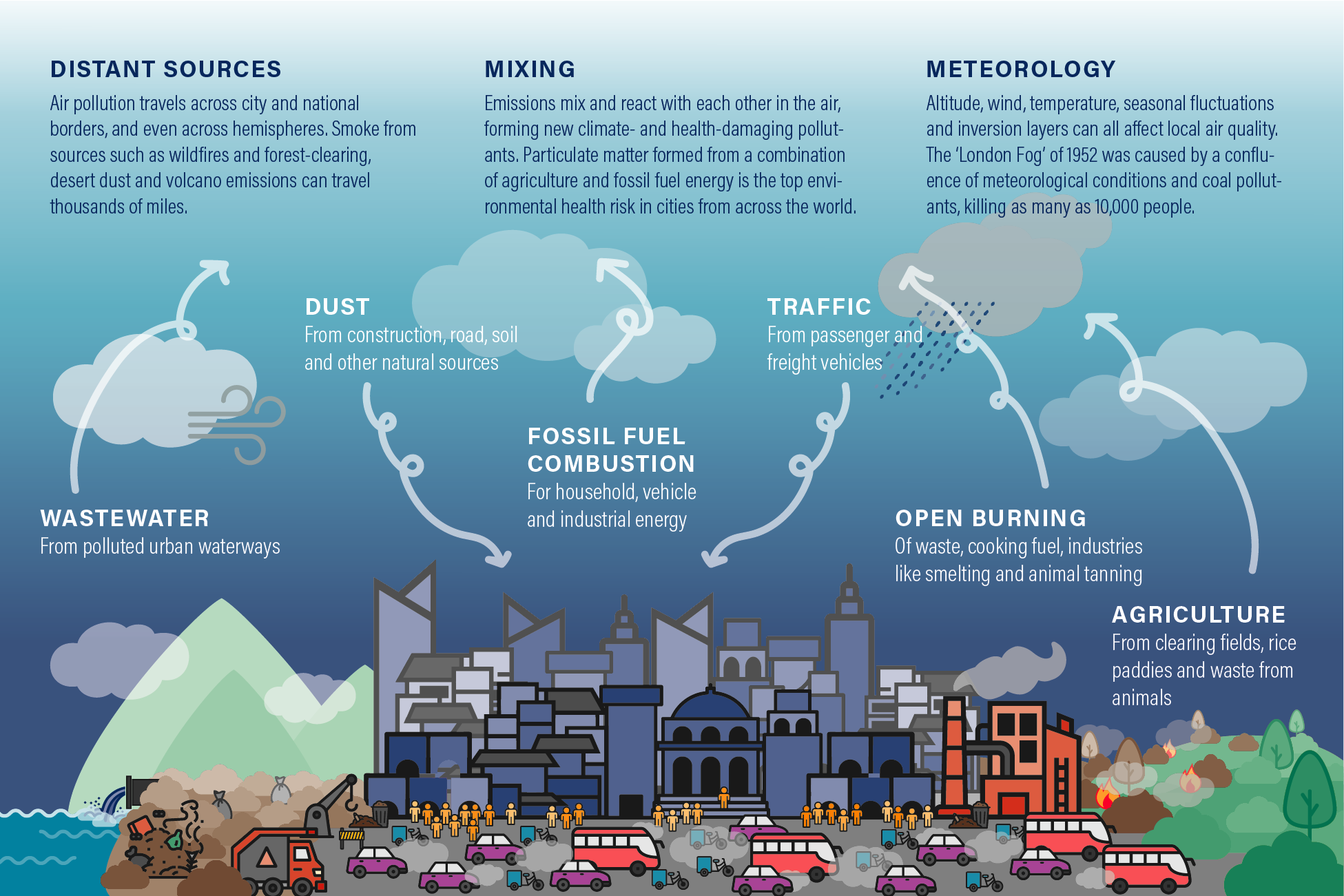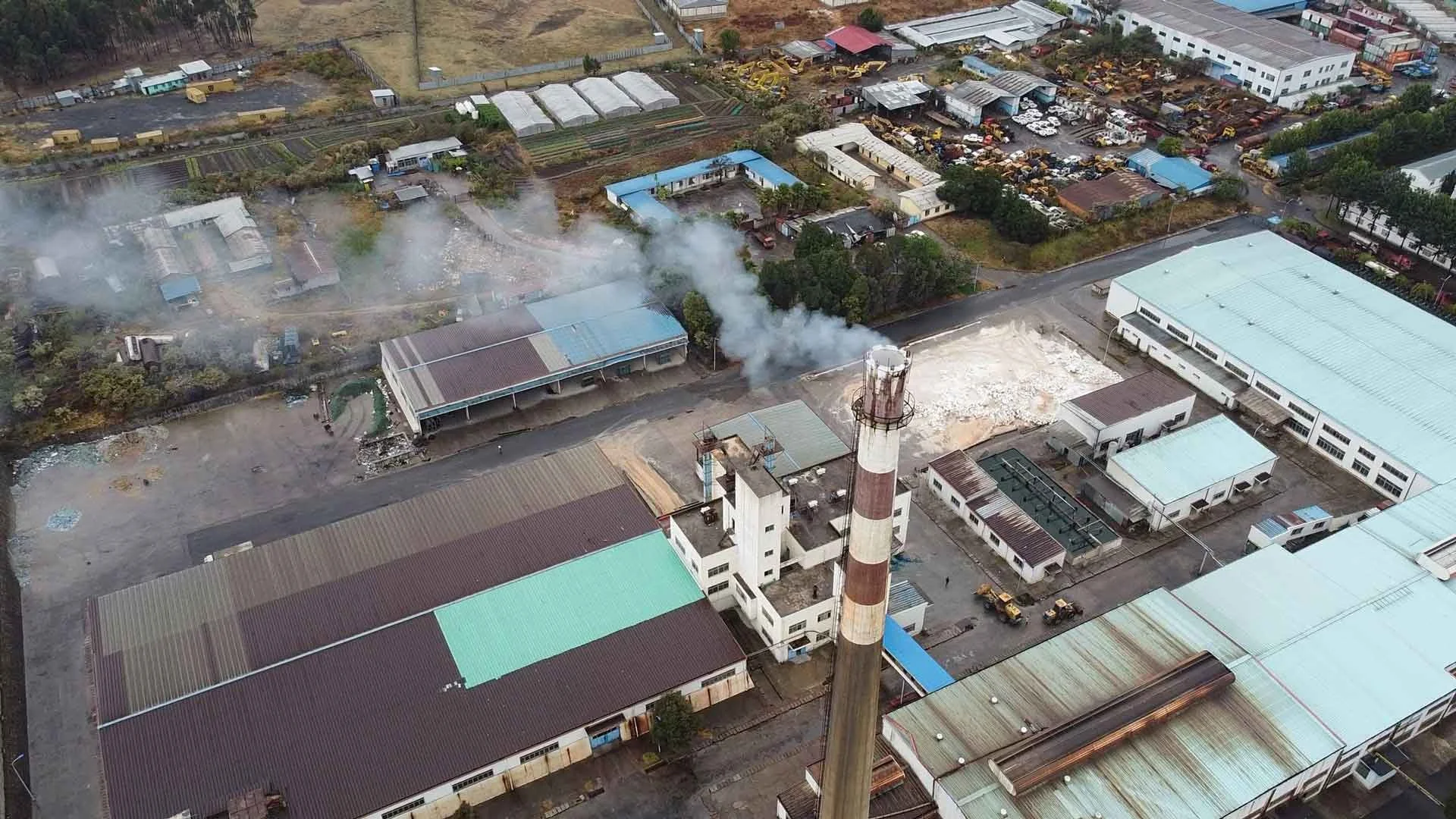
Air Pollution Sources

Why Focus on Source Awareness
It's hard to find solutions to any problem without a clear sense of what’s causing it. This is especially true when talking about air quality.
Black clouds from nearby smokestacks and tailpipes are easy to see, but most emissions and the chemical reactions that combine them into air pollution are invisible. These pollutants may originate from nearby sources or they may have traveled across borders and through the atmosphere from faraway places.
Untangling the Air Pollution Problem
Broad global sources of air pollution are well known, but the specific contributors to local pollution vary and require specialized analysis to disentangle.
Our multi-step approach to curbing air pollution begins with source awareness.
Data-driven strategies that help stakeholders understand the sources of air pollution - including how exposure and vulnerability differ by gender and other intersectional identity markers - to build shared, politically relevant knowledge and promote gender-smart solutions.
1. What are the sources of air pollution?
To create lasting solutions, we look to understand the local sources of pollution through air quality monitoring, emissions inventory, source apportionment, source attribution modeling, among other processes.
2. How are they impacting me and my community?
We may not realize it, but air pollution impacts us everyday, even when we can’t see it. Which is why we use exposure estimation, health indicator mapping, gender diagnostic reports, climate impact assessment, mobile monitoring, and satellite data to estimate how air pollution is impacting our pilot cities.
3. What can we do about it?
In order to create solutions that adapt to local circumstances, we create local partnerships, conduct capacity building and trainings, work with local partners to tackle solutions design, and conduct a communications strategy to reach as broad of an audience as possible.







